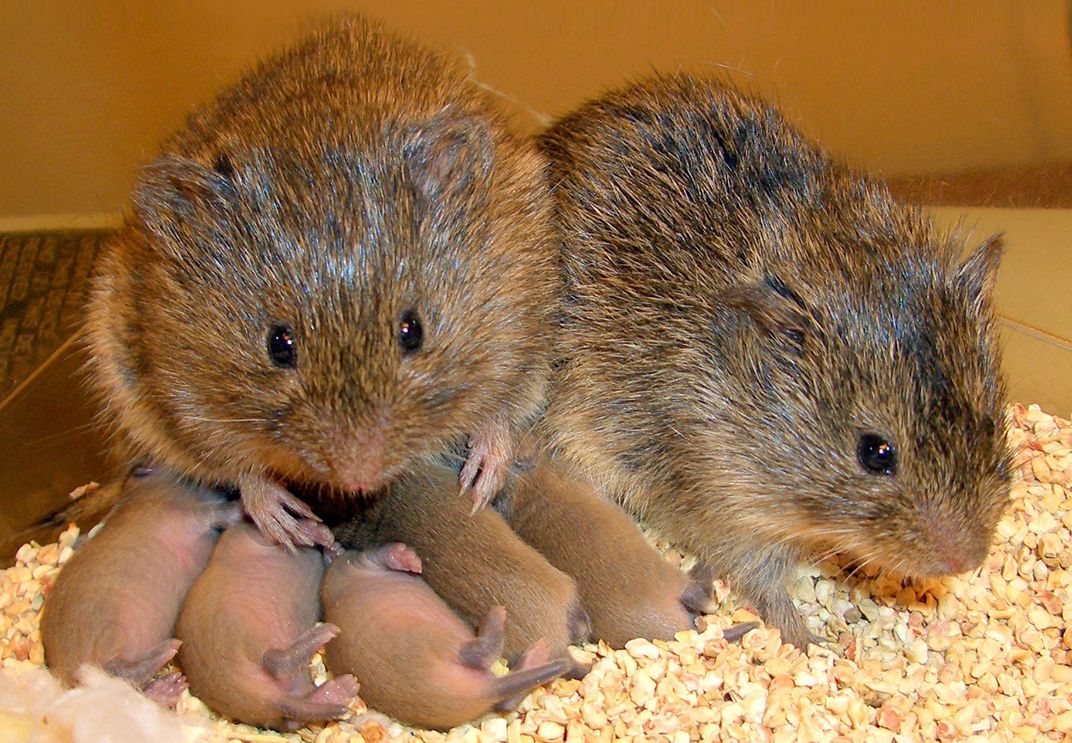Compare these two scenarios: meeting your significant other for a romantic dinner, or going for an after-work coffee with that guy you barely know from HR. We’ll bet one of these sounds a lot more appealing than the other, right? Scientists have just cracked the code for why we crave spending time with some people more than others, and they did it with help from some super-cute furry critters.
The prairie vole is one of only a handful of animals that, like humans, form monogamous bonds. That’s made them invaluable to generations of researchers analyzing all aspects of human connection and relationships, and it’s why they were an obvious choice for Zoe Donaldson and colleagues in their study of what happens in the brain when partnerships are made and broken.

Protect them at all costs.
Image credit: Todd Ahern
“What we have found, essentially, is a biological signature of desire that helps us explain why we want to be with some people more than other people,” Donaldson, an associate professor of behavioral neuroscience at CU Boulder, said in a statement.
“As humans, our entire social world is basically defined by different degrees of selective desire to interact with different people, whether it’s your romantic partner or your close friends. This research suggests that certain people leave a unique chemical imprint on our brain that drives us to maintain these bonds over time.”
The study used state-of-the-art neuroimaging to watch what was happening in the voles’ brains in real time when they were separated from their partners. In one scenario, two paired voles were separated by a door that one had to open with a lever; in another, the female vole was forced to clamber over a fence to reach her beloved.
Using a miniature fiber optic sensor, the team tracked activity in a part of the brain called the nucleus accumbens, which we know from human studies is vital in motivating us to seek reward. When an animal engages in behaviors that should lead them to something they desire – like a fuzzy little vole searching for its life partner – the neurotransmitter dopamine floods the brain’s reward system.
The fiber optic sensors used in the study lit up each time they picked up a hit of dopamine. When the voles were finally reunited with their loved ones, first author Anne Pierce said the light show was “like a rave”. By contrast, while they were separated, the lights dimmed.
“This suggests that not only is dopamine really important for motivating us to seek out our partner, but there’s actually more dopamine coursing through our reward center when we are with our partner than when we are with a stranger,” Pierce explained.
Okay, tissues at the ready people. In the next experiment, a vole couple was kept apart for four whole weeks. In the wild, this would be long enough for a vole to seek a new mate, so in many ways it is akin to a bereavement, or at least a very painful breakup, in humans.
When the voles were finally reunited, they hadn’t forgotten each other, but that characteristic flood of dopamine had gone. In other words, they’d lost their strong desire for one another.
“We think of this as sort of a reset within the brain that allows the animal to now go on and potentially form a new bond,” said Donaldson. While this may sound sad, it could actually be good news for humans who have experienced loss or a relationship breakdown – this could be the brain’s way of allowing us to move on.
More research will be needed before we know how well these findings translate from prairie voles to humans, but the authors believe their work could have important implications for humans coping with grief, or those who struggle to form intimate relationships.
“The hope is that by understanding what healthy bonds look like within the brain, we can begin to identify new therapies to help the many people with mental illnesses that affect their social world,” Donaldson said.
The study is published in Current Biology.
Source Link: Desire Leaves A Chemical Mark On The Brain, And Scientists Just Found It